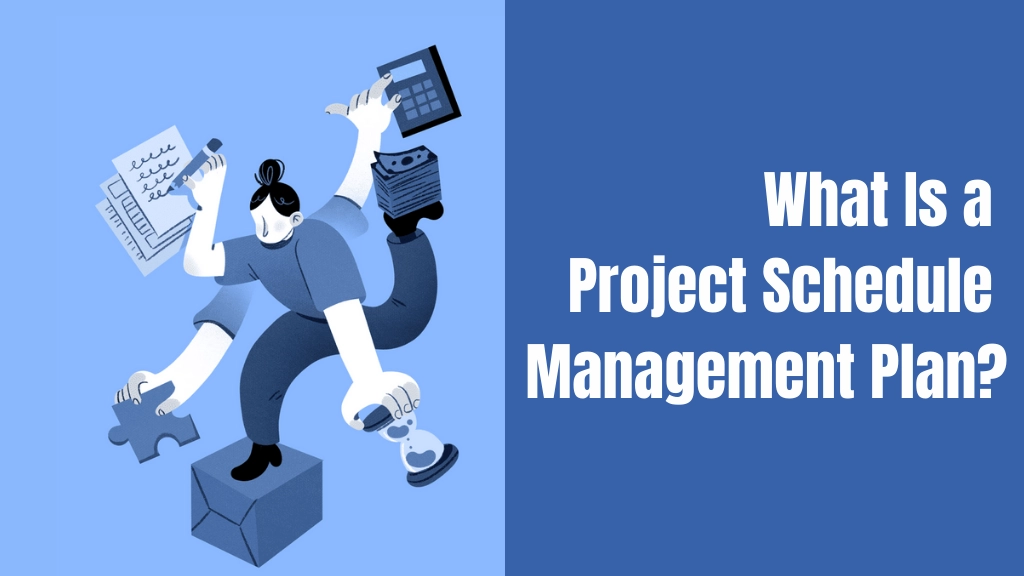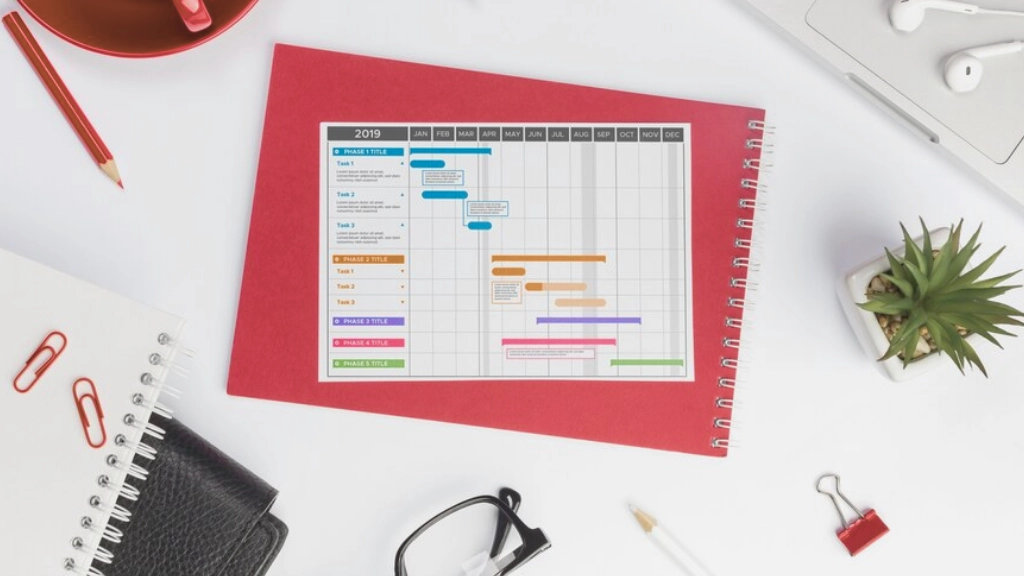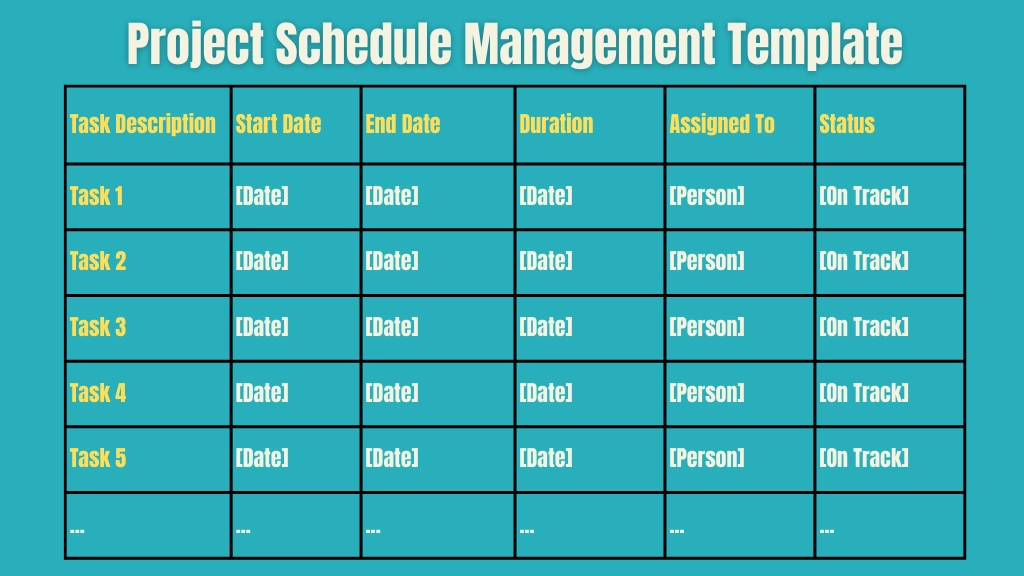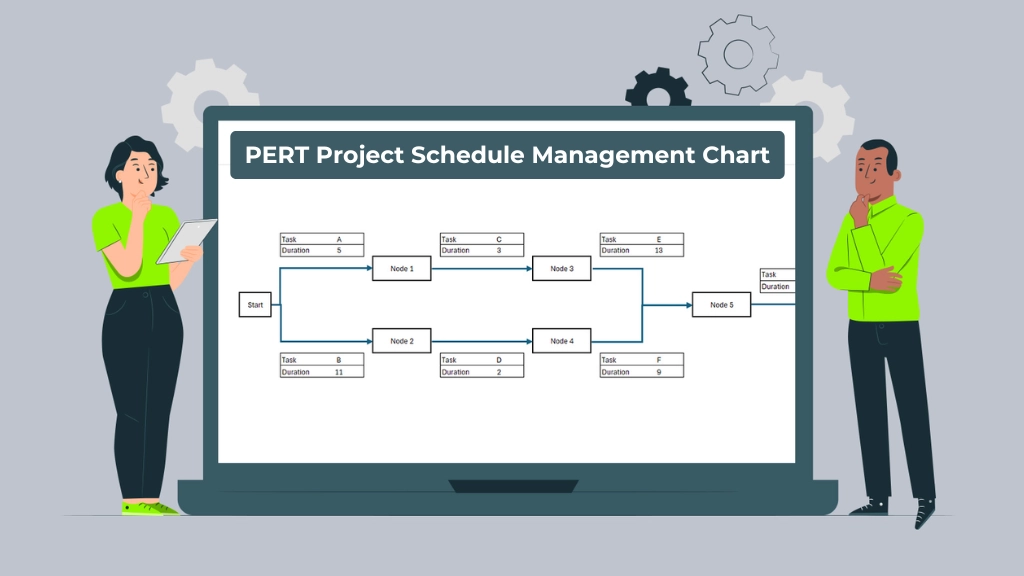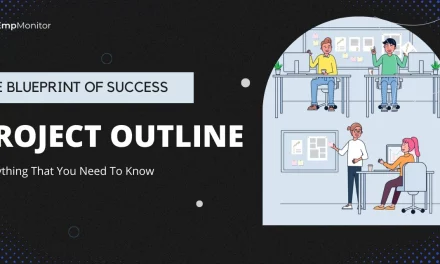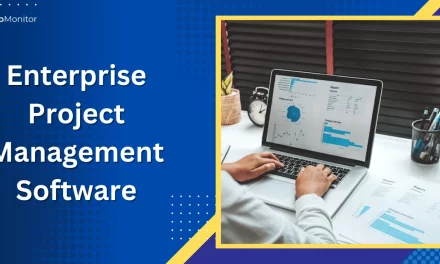Ever felt like you’re constantly battling against the clock in the world of project management?
You’re not alone. The struggle to keep projects on track, within budget, and delivered on time is a universal challenge that often keeps even the most seasoned project managers awake at night.
In this blog, where we confront the very heart of this challenge:
project schedule management planning. It’s the Achilles’ heel of many projects—the overlooked aspect that, when mishandled, can spell disaster faster than you can say “deadline.”
So, Join us as we embark on a journey to transform your project management woes into victories. Together, let’s reclaim control of our schedules, our projects, and our sanity. It’s time to make and maintain a project management plan that’s not just a roadmap but a blueprint for success.
Are you ready?
Let’s dive in.
Listen To The Blog Now!
What Is a Project Schedule Management Plan?
A schedule project management Plan is a comprehensive document that outlines the strategies, processes, and methods for creating, tracking, and managing a project schedule.
It acts as a timeline for project managers and your team, outlining how time-sensitive aspects to handle your project from start to finish. At the core of a project schedule management plan are the methodology and tools needed to make sure project activities are completed on time and within budget.
It encompasses various components essential for management, including,
Roles and Responsibilities: Clearly define the roles and responsibilities of project team members involved in schedule development, monitoring, and control. This ensures accountability and fosters collaboration among team members.
Schedule Development: Outlines the process for creating the project schedule, including task identification, sequencing, duration estimation, and resource allocation. It may involve the use of scheduling techniques such as the critical path method (CPM) or program evaluation and review technique (PERT).
Schedule Control: Describes the mechanisms for monitoring schedule performance, tracking progress against milestones, and identifying deviations from the planned schedule. It includes procedures for implementing corrective actions to address schedule variances and ensure project alignment with timelines.
Schedule Changes: Establishes procedures for evaluating and implementing changes to the project schedule while minimizing disruptions. It outlines the change management process, including the assessment of change impacts, approval workflows, and documentation requirements.
Scheduling Tools: Identifies the tools, software, and techniques for schedule development, monitoring, and reporting. This may include project management tool to visualize and manage multiple project timelines effectively.
Integration with Other Project Management Processes: Determine how the project plan will interact with other project management tools such as risk, resource, and quality management. It ensures alignment and coherence across different project dimensions.
Communication and Reporting: Defines communication channels, reporting structures, and escalation procedures for schedule adherence related issues and updates. It ensures that stakeholders are promptly informed about schedule progress, deviations, and mitigation strategies.
Overall, a Project schedule management Plan is a foundational document that guides project teams in orchestrating the timely execution of project activities, optimizing resource utilization, and mitigating schedule-related risks. It provides clarity, transparency, and structure to the schedule management process, enabling stakeholders to collaborate effectively and achieve project objectives within stipulated timelines.
How to Make a Project Schedule Management Plan?
Crafting a management plan is essential for ensuring that your project progresses smoothly and meets its objectives within the allocated time frame.
Here’s a step-by-step guide on how to create a comprehensive project schedule management plan:
Define Project Objectives and Scope: This is where you clearly outline what the project aims to achieve and the boundaries within which it will operate. It sets the overall direction for the project.
Identify Project Activities: Break down the project into smaller tasks and activities. This step ensures that you have a comprehensive list of everything that needs to be done to accomplish the project objectives.
Sequence Activities: Determine the order in which tasks should be performed and identify any dependencies between tasks. This helps in creating a logical flow of work and ensures that tasks are completed in the right sequence.
Estimate Activity Durations: Estimate the time required to complete each activity. This involves considering various factors such as the complexity of the task, resource availability, and potential risks that may affect the duration.
Allocate Resources: Identify the resources needed for each task, including human resources (e.g., team members with specific skills) and material resources (e.g., equipment or tools). This step ensures that resources are available when needed and prevents conflicts over resource allocation.
Develop the Project Schedule: Use project management tools like Gantt charts to create a timeline for the project. Input the sequence of activities, their durations, and resource assignments to generate a schedule that outlines when each task will be completed.
Define Roles and Responsibilities: Clearly define the roles and responsibilities of each team member involved in the project. This ensures that everyone understands what is expected of them and who is accountable for each task.
Establish Communication Channels: Define how communication will occur within the project team. This includes setting up regular meetings, establishing reporting structures, and determining how project updates will be shared.
Monitor and Control the Schedule: Regularly monitor the progress of project activities against the planned schedule. This allows you to identify any deviations from the plan and take corrective action if necessary to keep the project on track.
Manage Schedule Changes: Implement a process for managing changes to the project schedule. This involves assessing the impact of proposed changes and making adjustments as needed while minimizing disruptions to the project.
Document the Schedule Management Plan: Document all aspects of the schedule management process in a formal document. This ensures that everyone involved in the project understands how the schedule will be developed and controlled, and provides a reference point for future changes or updates.
By following these steps, you can develop a robust project schedule management plan that serves as a roadmap for successful project execution. Effective schedule management is crucial for keeping your project on track, minimizing delays, and ensuring that you achieve your project goals within the specified time frame.
Read More:
Project Management Timeline: How To Create One & Example
How To Manage Multiple Projects Effectively – 9 Powerful Tips
Schedule Management Checklist –
A comprehensive schedule management checklist serves as a roadmap for navigating the complexities of project scheduling and execution.
How Will You Develop the Project Schedule?
To develop the project schedule, start by clearly defining project scope, objectives, and tasks. Break down tasks into manageable units, estimate durations, and sequence activities. Leverage scheduling tools like Gantt charts to create a visual timeline, ensuring alignment with project goals and efficient task management.
Who Is in the Loop?
In schedule development, designate a project manager to oversee planning, task sequencing, and resource allocation. For monitoring and control, assign team leads to track progress and mitigate deviations. Establish regular meetings and digital platforms for stakeholder feedback and collaboration. Ensure consensus among stakeholders on schedule objectives and limitations for project alignment.
How and When Is Performance Measured?
Implement performance metrics and KPIs aligned with project objectives. Monitor progress against milestones to assess schedule adherence. Conduct regular reviews to identify areas for improvement.
This ensures timely course corrections and enhances project efficiency, keeping it on track for successful completion.
What’s The Best Way To Handle Resources?
Optimize resource allocation to align with project priorities and schedule. Monitor resource utilization to spot bottlenecks. Implement leveling strategies to balance workload and maximize resource efficiency.
This ensures smooth project execution, preventing overages and completing tasks efficiently while meeting deadlines.
How Will You Stay on Track?
Proactively identify risks and dependencies to anticipate potential schedule disruptions. Implement mitigation strategies to minimize their impact on project timelines.
Leverage project management tools for real-time monitoring of employee progress. This ensures timely adjustments and enhances schedule adherence, facilitating smoother project execution.
One effective method for real-time monitoring is through the use of a workforce management tool. This software provides insights into employee activities, productivity levels, and task completion rates. By using employee monitoring software like EmpMonitor, managers gain visibility into how time is spent, identify bottlenecks, and assess productivity trends.
EmpMonitor| Advanced Workforce Management Software
As part of a comprehensive project schedule management plan, EmpMonitor serves as a valuable tool for real-time monitoring of employee activities. Incorporating employee monitoring software like EmpMonitor into the project schedule management strategy to achieve the following:
Productivity Tracking: EmpMonitor allows for detailed tracking of employee activities, providing insights into how time allocation occurs throughout the workday. This feature helps in identifying productive periods and areas that may require improvement.
Task Completion Monitoring: The software allows managers to keep track of progress in real time, making sure to meet project milestones on time. This contributes to proactive issue resolution and adherence to the project management timeline.
Identifying Bottlenecks: EmpMonitor helps in identifying potential bottlenecks or delays by analyzing employee workflows. This information is crucial for project managers to address issues promptly and optimize processes for better efficiency.
Resource Allocation: Through the data provided by EmpMonitor, project managers can make informed decisions regarding resource allocation. This ensures that the right resources are assigned to specific tasks, contributing to the overall success of the project.
Data-Driven Decision Making: EmpMonitor provides data-driven insights, allowing project managers to make informed decisions based on employee performance and work patterns. This contributes to more effective planning and adjustment of schedules as needed.
By integrating EmpMonitor an into the project management plan, teams can streamline workflows, enhance accountability, and maintain a proactive approach to potential challenges. This, in turn, contributes to the successful creation and maintenance of a robust project schedule management plan.
Project Schedule Management Plan Template
Creating a project schedule management plan template can vary depending on the complexity and nature of your project. However, I can provide you with a basic template that you can customize according to your specific project requirements.
Here’s a simple template using a chart format:
Project Schedule Management Template
Project Name: [Enter Project Name]
Project Manager: [Enter Project Manager Name]
Start Date: [Enter Start Date]
End Date: [Enter End Date]
Instructions:
Task Description: Describe each task or activity that needs to be completed for the project.
Start Date: Enter the planned start date for each task.
End Date: Enter the planned end date for each task.
Duration: Calculate the duration of each task in days.
Assigned To: Specify the person or team responsible for completing each task.
Status: Update the status of each task as it progresses (e.g., On Track, Delayed, Completed, etc.).
Bounty For You!!
A network diagram, such as a PERT chart, visually depicts task sequences and their corresponding dependencies within a project. It’s great for identifying critical paths—sequences of tasks that impact project duration the most. Tasks on the critical path have no slack, meaning delays directly extend project time. This helps managers allocate resources efficiently and find ways to optimize timelines.
Here’s A Quick Project Scheduling Example:
Installing pollution control equipment at a company.
Wrapping Up!!
In conclusion, project schedule management is the cornerstone of project success, ensuring tasks are completed on time and within budget. By following this blog’s outline, you can develop and implement a comprehensive project management strategy that will prepare your project for success.
Whether you’re using EmpMonitor as a project management tool or workforce management software, the key is to stay organized, communicate effectively, and adapt to changes as they arise. With careful planning and execution, including setting and achieving project milestones, you can face challenges with assurance and reach your goals.
FAQs
Q. How do I develop a project schedule management plan?
A. Start by defining project objectives and scope, then break down the project into smaller tasks. Sequence these tasks, estimate their durations, and allocate resources. Use scheduling tools like Gantt charts or project management software to create a visual timeline. Finally, document roles, responsibilities, and communication channels.
Q. What are some common challenges in project schedule management, and how can they be addressed?
A. Common challenges include scope changes, resource constraints, and unexpected delays. Address these by regularly reviewing and adjusting the schedule, communicating effectively with stakeholders, and having contingency plans in place to mitigate risks.
Q. How can technology enhance project schedule management?
A. Technology, such as project management software and workforce monitoring tools like EmpMonitor, can significantly enhance schedule management. These tools provide real-time tracking, automated reminders, and detailed analytics, helping project managers to stay on top of deadlines, monitor productivity, and make informed decisions.
Q. How do you handle unexpected delays in a project schedule?
A. Unexpected delays can be managed by regularly monitoring progress, identifying potential risks early, and having contingency plans in place. EmpMonitor’s real-time tracking can help quickly identify delays, allowing project managers to adjust resources and timelines to mitigate the impact.
Q. What is the role of resource allocation in project schedule management?
A. Resource allocation ensures that the right resources are available for each task at the right time. Proper allocation helps prevent bottlenecks and ensure smooth project execution. EmpMonitor aids in optimizing resource utilization by providing insights into employee productivity and workload.
Q. How does effective communication impact project schedule management?
A. Effective communication ensures that all stakeholders are informed about project progress, potential issues, and changes to the schedule. Clear communication channels help maintain transparency and enable quick decision-making, crucial for keeping the project on track.


